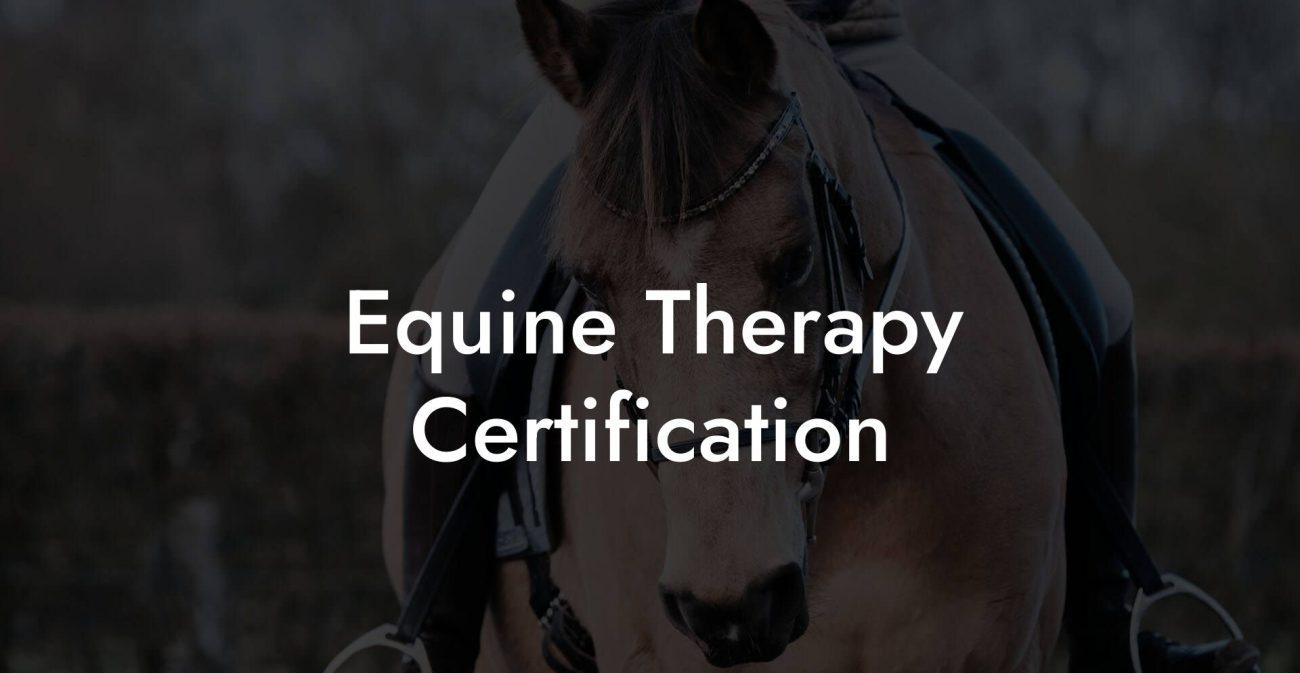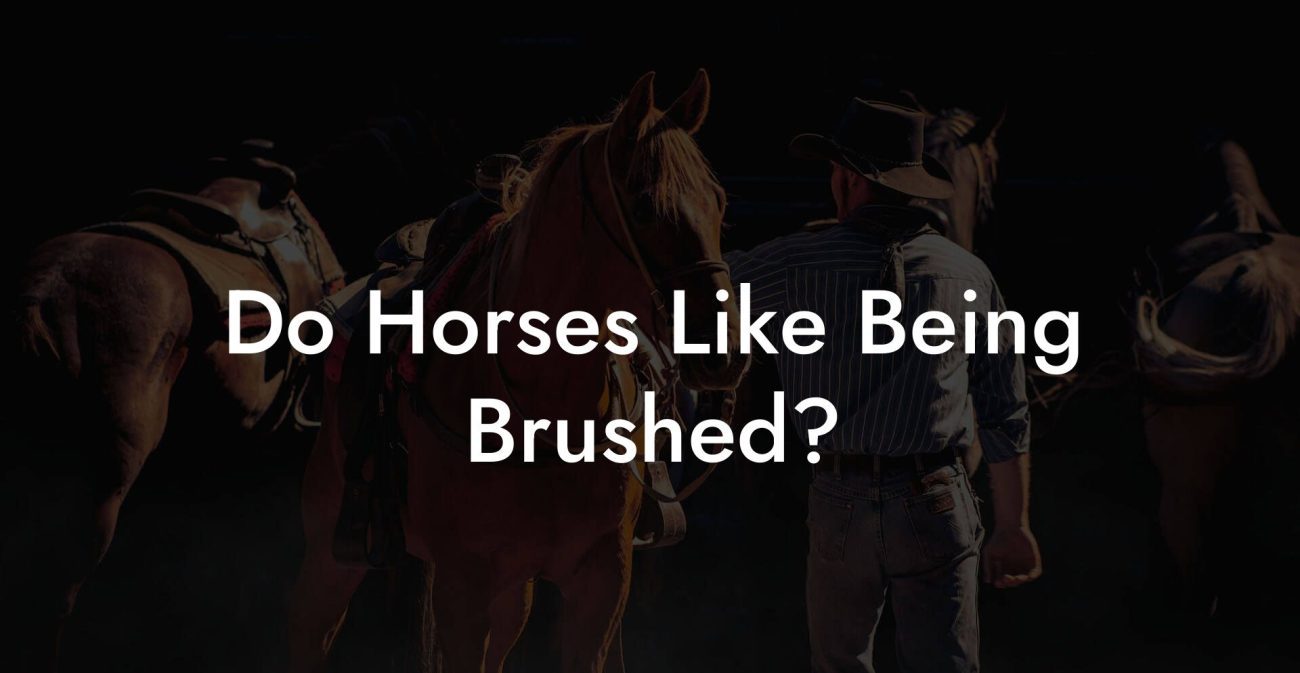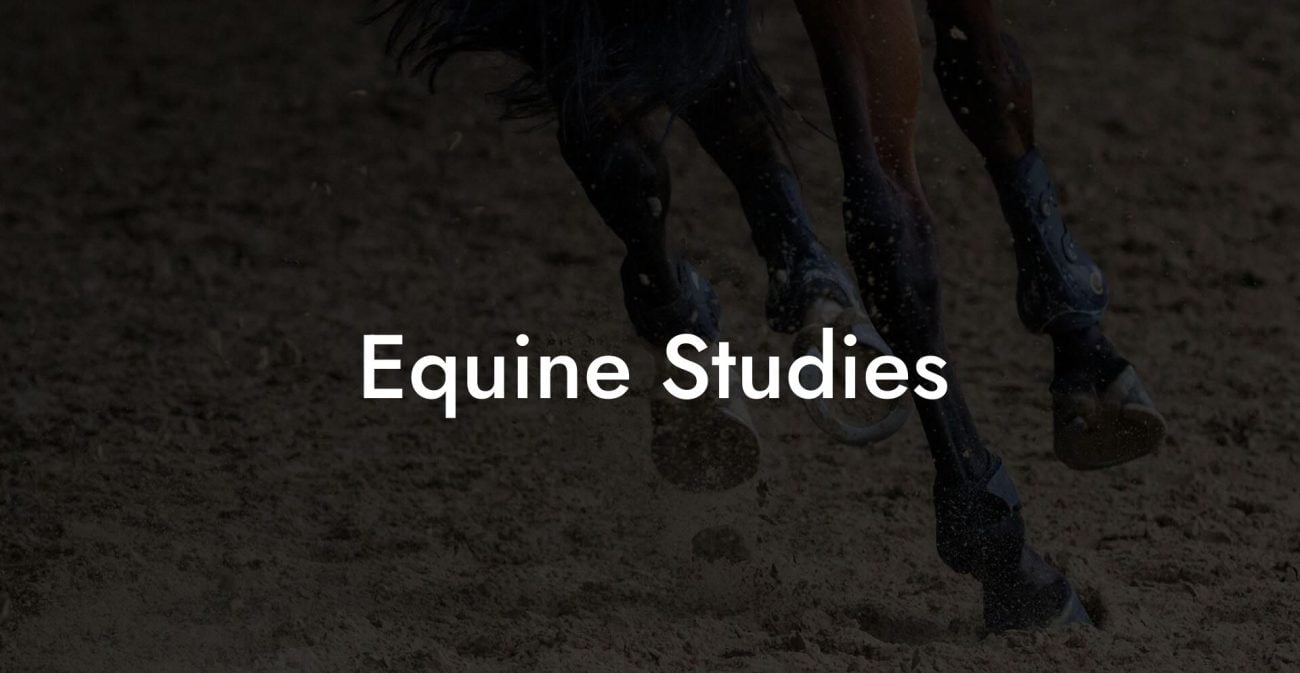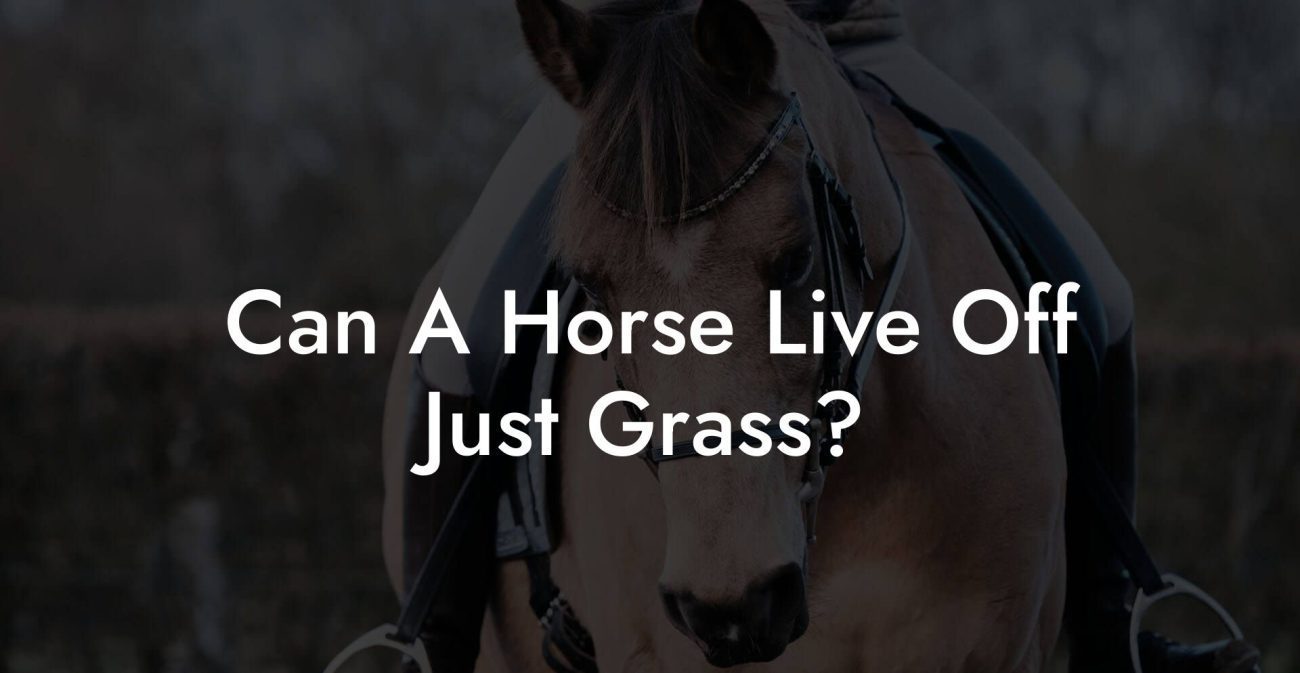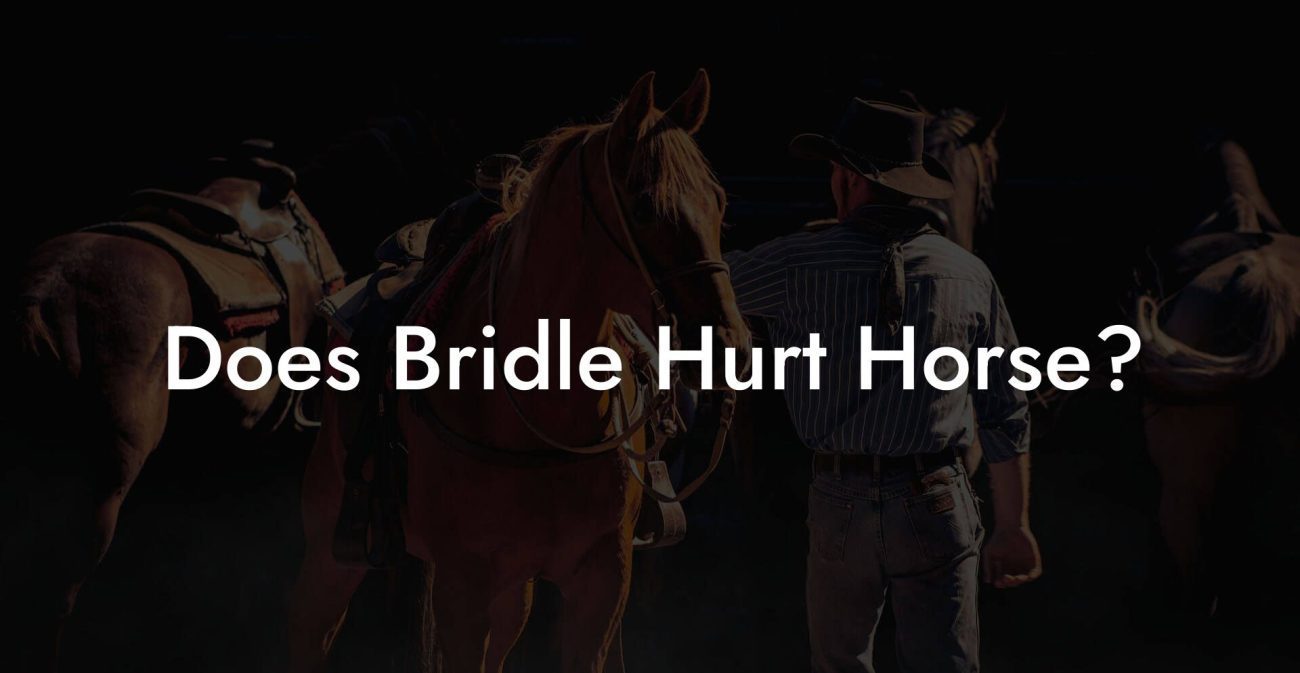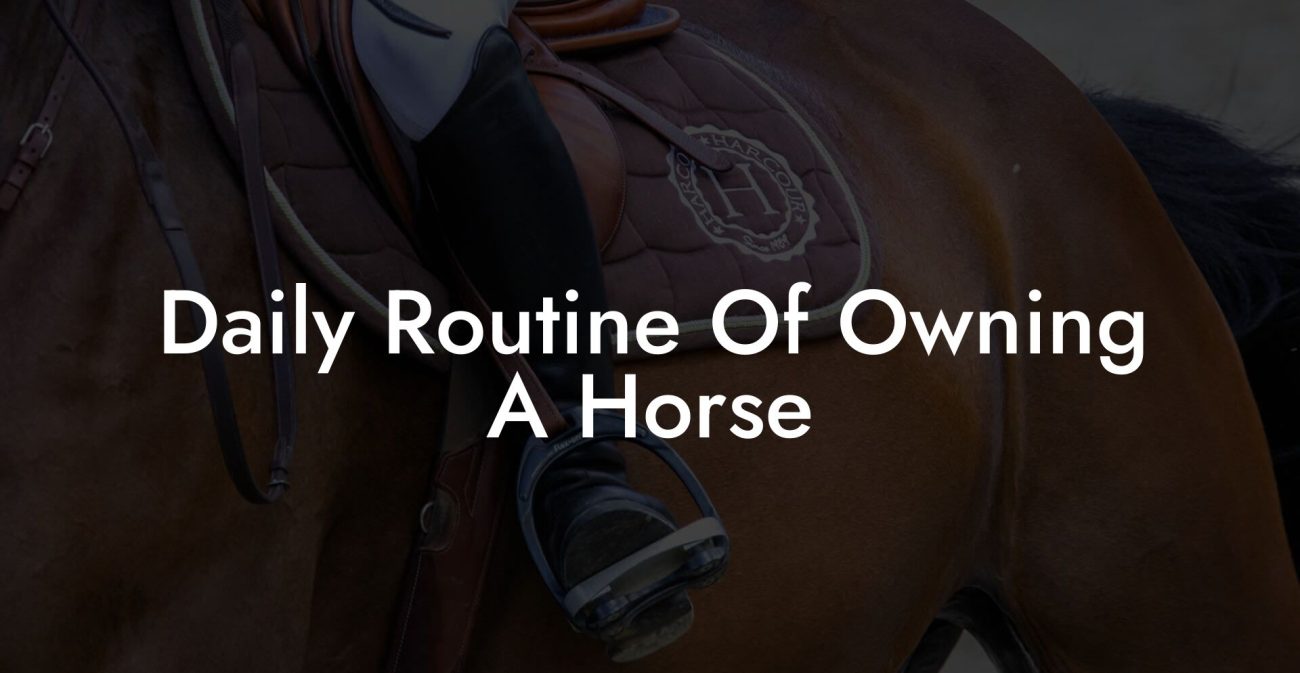A heart-pounding moment at the barn, a sudden twist in your horse’s behavior, a staggering step, and a sound that sets your nerves on edge. When your majestic mare or stallion shows signs of colic, it feels like the equine equivalent of a mic drop in mid-performance, and you’re left scrambling for answers. In this in-depth guide, we’re diving headfirst into the what, why, and how of dealing with horse colic, mixing solid vet advice with a refreshingly real voice. Whether you’re a first-time horse owner or someone who’s been around the paddock a few times, this article is your roadmap to staying cool, calm, and collected when your horse is colicing.
Quick Links to Useful Sections
- Understanding Equine Colic: When Your Horse Is in Trouble
- What Causes Colic in Horses? Decoding the Culprits
- Signs and Symptoms to Watch For: Is It Time to Act?
- Immediate Actions: What To Do If Your Horse Is Colicing
- Step 1: Evaluate the Situation
- Step 2: Call Your Veterinarian Immediately
- Step 3: Make Your Horse Comfortable
- Treatment Strategies: Conventional and Alternative Approaches
- Conventional Treatments
- Alternative and Complementary Therapies
- Preventing Colic: Proactive Steps for Equine health
- Consistent Feeding Practices
- Ensure Adequate Hydration
- Regular Exercise
- Monitor and Manage Stress
- Parasite Control
- Dietary Considerations: Feeding Your Horse for Digestive Success
- High-Quality Forage
- Balanced Concentrates
- Supplements and Probiotics
- Addressing Behavioral Changes: How Stress Impacts the Equine Gut
- Understanding Stress Responses
- Creating a Calm Environment
- Holistic Approaches to Managing and Preventing Colic
- Mindful Management Techniques
- Integrative Therapies
- Environmental Enrichments
- A Step-by-Step Guide to Immediate Colic Management
- 1. Stay Calm and Assess
- 2. Contact Your Veterinarian
- 3. Create a Safe Space
- 4. Monitor Closely
- 5. Follow Veterinary Advice
- Navigating Post-Colic Recovery: Supporting Your Horse After the Storm
- Follow-Up Care
- Adjusting the Diet
- Creating a Stress-Free Environment
- Resources and Community Support: Your Next Steps
- Where to Find Reliable Information
- Join Online Forums and Social Media Groups
- Engage with Your Local Equine Community
- Leveraging Technology for Equine Health Monitoring
- Mobile Apps and Wearables
- Telemedicine and Virtual Consultations
- Building a Long-Term Colic Prevention Plan
- Comprehensive Health Check-Ups
- Tailored Nutritional Programs
- Environment and Routine
- Ongoing Education and Community Engagement
- Equine Colic FAQ: Your Top Questions Answered
- Your Path Forward: Empowering Your Equine Care Journey
Understanding Equine Colic: When Your Horse Is in Trouble
Horse colic isn’t just a mundane hiccup in your equine friend’s day, it’s a potentially life-threatening condition, and knowing how to recognize it early can make all the difference. Colic refers to abdominal pain in horses, a catch-all term that covers a range of gastrointestinal disturbances that can escalate rapidly. For those of you dipping your toes into the world of equine care for the first time, or for the seasoned riders, it’s crucial to understand what’s happening beneath that sleek coat when colic rears its head.
In essence, colic is the horse’s way of signaling that something in its digestive system is amiss. This can include gas build-up, impaction (when food or feed blocks the intestines), or even intestinal torsion. It’s like your horse’s internal “SOS” light flicking on, and ignoring it can lead to severe consequences. With colic, timing is everything!
Keywords like "horse colic," "equine pain," "gastrointestinal distress," and "colic symptoms" aren’t just industry jargon, they’re lifelines. They remind you that the first step in managing colic is being educated and aware. From understanding the underlying causes to recognizing the telltale signs, arm yourself with knowledge and prepare to act fast.
What Causes Colic in Horses? Decoding the Culprits
Colic is not a singular condition, and its causes can be as diverse as the horses we care for. Here’s a breakdown of some of the most common culprits:
- Dietary Changes: A sudden shift in feed, inadequate roughage, or poor-quality fodder can wreak havoc on your horse’s digestive system.
- Water Intake: Insufficient water consumption leads to dehydration, affecting digestion and increasing the likelihood of impactions.
- Exercise and Movement: Abrupt changes in routine or extended periods of inactivity alter gut motility, paving the way for colic episodes.
- Parasites: Internal parasites, especially when left unchecked, can trigger gastrointestinal disruptions that culminate in colic.
- Stress: Major adjustments in your horse’s environment, new stables, changes in routine, or even the stress of transport, can create digestive disturbances.
- Obstructions and Twists: Physical blockages, or even a twist in the intestines (volvulus), are severe forms of colic that demand immediate attention.
Knowing these triggers can help you adopt preventive measures and spot potential problems before they escalate into full-blown emergencies.
Signs and Symptoms to Watch For: Is It Time to Act?
When your horse is colicing, subtle hints can quickly become glaring red flags. Recognize these symptoms early on:
- Restlessness or Pawing: Your horse might exhibit unusual restlessness, pacing in the stall or pawing at the ground repeatedly.
- Rolling: A classic sign, if your horse is rolling frequently and appears to be trying to relieve discomfort, don’t ignore it.
- Lack of Appetite: A sudden disinterest in food or water can signal internal distress.
- Increased Heart Rate or Labored Breathing: Elevated heart rate and rapid, shallow breaths are key indicators of pain.
- Twitching or Straighter Sitting Posture: Watch for muscle tension, a stiff or tense body, and uncharacteristic posturing.
- Abdominal Distension: A bloated belly or unusual intestinal sounds on the flanks can indicate severe gas build-up or impaction.
The presence of one or several of these symptoms should trigger your inner emergency responder. Colic in horses can progress rapidly, so timely observation and response are paramount.
Immediate Actions: What To Do If Your Horse Is Colicing
In the midst of a colic crisis, you might feel like you’re in the eye of a storm. Here’s a step-by-step guide on what to do:
Step 1: Evaluate the Situation
Calmly assess your horse’s behavior and physical signs. Is the animal restless or attempting to roll excessively? Check for abnormal noises, such as loud borborygmi (intestinal gurgling), and any signs of bloating. Your observations will guide your next steps.
Step 2: Call Your Veterinarian Immediately
Time is critical when dealing with colic. Pick up your phone and call your trusted veterinarian as soon as colic symptoms become apparent. Inform them about your horse’s condition, the symptoms you observe, and any relevant history, like recent changes in diet or routine. Make it clear that this is a potential emergency.
Step 3: Make Your Horse Comfortable
While you’re waiting for professional help, work on keeping your horse as comfortable as possible:
- Maintain a Calm Environment: Reduce noise and stress by moving your horse to a quiet, familiar area if possible.
- Monitor Vital Signs: Keep a close watch on heart rate, respiratory rate, and overall demeanor. If you have experience, check for any signs of severe pain or distress.
- Avoid Unnecessary Interference: While it may be tempting to try home remedies, remember that colic is not a one-size-fits-all situation, a proper diagnosis by a veterinarian is essential.
A composed owner is the best support your horse can have during this stressful time.
Treatment Strategies: Conventional and Alternative Approaches
Once professional help arrives, treatment strategies are typically tailored to the cause and severity of the colic. While your veterinarian sets the course, it’s useful for you to understand what might be on the table.
Conventional Treatments
In many cases, veterinary interventions can include:
- Fluid Therapy: Administering IV fluids helps rehydrate your horse and restore electrolyte balance, which is crucial if dehydration is a factor.
- Medications: Pain relief is paramount. Vets commonly use non-steroidal anti-inflammatory drugs (NSAIDs) to reduce pain and inflammation. Other drugs might be used to relax the gastrointestinal tract.
- Surgical Intervention: In severe cases, especially when a twist or blockage is present, surgery becomes inevitable. Timeliness is key, surgical intervention can be life-saving.
- Nasogastric Intubation: A tube inserted through the nose can help relieve gas build-up in the stomach and intestines, easing pressure and reducing pain.
Alternative and Complementary Therapies
Some horse owners complement traditional veterinary care with alternative treatments, particularly for mild cases:
- Herbal Remedies: Certain herbs have been used historically to support digestion. However, always consult with your vet before administering any herbal supplements.
- Probiotic Supplements: Maintaining a balanced gut flora can help prevent colic episodes. Probiotics are increasingly popular with owners looking for a natural boost.
- Massage and Warm Compresses: Gentle abdominal massage and the application of a warm compress can help relax the muscles and relieve mild discomfort.
- Acupressure: While still a topic of debate among professionals, some find that targeted acupressure on the back and shoulders may ease tension.
Integrating alternative approaches should always be a conversation with your veterinarian, ensuring that any complementary care supports the overall treatment strategy.
Preventing Colic: Proactive Steps for Equine health
The best offense against colic is a solid defense. Preventing colic isn’t just about reacting when symptoms appear, it involves a comprehensive management plan that keeps your horse’s digestive system in top shape. Here are some proactive steps:
Consistent Feeding Practices
Horses are creatures of habit, and a sudden change in diet is one of the primary triggers of colic. Stick to a consistent feeding schedule and avoid large, infrequent meals that can overload the digestive system. Introduce any dietary changes gradually over several days or even weeks.
Ensure Adequate Hydration
Just like athletes training for a marathon, your horse needs water to keep its digestive engine running smoothly. Make sure your horse has constant access to clean, fresh water, especially during hot weather or strenuous activity.
Regular Exercise
Movement is medicine. Regular, low-impact exercise helps maintain gut motility and prevents the build-up of digestive waste. Even a daily turnout can work wonders in reducing the risk of gastrointestinal stagnation.
Monitor and Manage Stress
Stress can be a covert contributor to colic. Changes in the environment, social dynamics within the herd, or even the stress of travel can disrupt your horse’s calm. Implement stress-reducing practices such as consistent routines or even calming supplements (after getting a vet’s approval).
Parasite Control
Keeping parasites at bay is a cornerstone of preventing colic. Regular deworming, as advised by your veterinarian, can minimize the risk of intestinal blockages and inflammation.
By focusing on routine care, gradual dietary transitions, and stress management, you’re laying the groundwork for a healthier, happier horse with a much lower risk of colic.
Dietary Considerations: Feeding Your Horse for Digestive Success
Your horse’s diet is the first line of defense against colic, and making smart, informed choices can have a profound impact on digestive health. Here’s what you need to consider:
High-Quality Forage
The bulk of your horse’s diet should come from high-quality forage. Hay and pasture provide the necessary fiber to keep the digestive system moving smoothly. Avoid sudden changes; if you must change hay brands or types, do so gradually to allow the gut flora to adjust.
Balanced Concentrates
While grains and concentrates can provide energy, excessive amounts may disrupt the delicate microbial balance in the gut. Use them sparingly and in combination with ample forage to prevent digestive upsets.
Supplements and Probiotics
Supplements such as probiotics, prebiotics, and digestive enzymes can help maintain a healthy gastrointestinal tract. They work by promoting good bacteria in the gut, enhancing digestion, and potentially reducing the risk of colic. Always consult your veterinarian before adding supplements to your horse’s diet.
A well-rounded diet, coupled with consistent feeding habits, not only supports overall health but also serves as a critical preventive strategy against colic episodes.
Addressing Behavioral Changes: How Stress Impacts the Equine Gut
Horses are sensitive creatures, and their behavior can be a window into their overall health. Stress and anxiety are not just mental burdens, they can directly affect the digestive system, leading to intermittent colic episodes. Recognizing behavioral changes early can help you take preemptive action.
Understanding Stress Responses
Just like humans, horses exhibit physical signs when they’re under stress. These may include changes in eating habits, increased sweating, or even unusual aggression. A stressed horse might also display signs such as pacing, reluctance to move, or even a subtle change in their gait.
Creating a Calm Environment
A stable, predictable environment can work wonders. Consider aspects such as:
- Consistent Daily Routines: Horses thrive on predictability, so maintaining a regular schedule for feeding, exercise, and turnout can greatly reduce stress levels.
- Social Interaction: Horses are herd animals, and proper socialization helps keep them mentally balanced. Ensure your horse has companions but avoid overcrowded conditions that can lead to competition and stress.
- Environmental Enrichments: Adding elements like toys, varied terrain, or even simple changes in the grazing area can stimulate your horse mentally and reduce stress.
By addressing the behavioral aspects and mitigating stress, you’re not only creating a more pleasant environment but also directly supporting your horse’s digestive health, a critical factor in avoiding colic.
Holistic Approaches to Managing and Preventing Colic
Embracing a holistic approach means looking beyond just the physical symptoms and taking into account the overall well-being of your horse. It’s about nurturing both the body and the mind to prevent stress-related digestive issues.
Mindful Management Techniques
A calm, mindful approach to horse care can be a game changer. This might include:
- Daily Observation Rituals: Take time each day to gently check on your horse. Noticing even small deviations from its normal behavior can alert you to potential issues.
- Nutritional Mindfulness: Keep a feeding diary to monitor changes in appetite or digestion. Documenting these details can help you and your vet identify trends or triggers.
- Stress-Reducing Interventions: Incorporate activities that both you and your horse can enjoy, think easy trail rides, time in the pasture, or quiet moments in the paddock.
Integrative Therapies
Some owners integrate alternative therapies to complement traditional veterinary care. Acupuncture, for example, has gained traction in equine therapy circles as a way to relieve pain and improve gut motility. While the research is evolving, many owners report noticeable benefits from these integrative approaches.
Environmental Enrichments
Sometimes the remedy is as simple as a change in scenery. Rotating pastures, improving barn ventilation, and ensuring your horse has ample space to move can lead to reduced stress, which in turn supports a healthy digestive system.
Holistic care isn’t about replacing conventional treatments, it’s about enhancing them to optimize your horse’s overall well-being. A balanced blend of modern veterinary care and integrative, natural approaches can be your best defense against the onset of colic.
A Step-by-Step Guide to Immediate Colic Management
When colic strikes, it can feel like the barn is turned upside down. Here’s a detailed step-by-step guide on what to do when you suspect your horse is colicing:
1. Stay Calm and Assess
The first, and arguably most crucial, step is to remain calm. Your horse can easily pick up on your anxiety, which could exacerbate its symptoms. Assess your horse’s behavior, check its vital signs if you’re comfortable doing so, and note any unusual behaviors.
2. Contact Your Veterinarian
Don’t wait, reach out to your veterinarian immediately. Even if the symptoms appear mild, colic can escalate quickly. Provide as much detail as possible about the behavior, recent dietary changes, and any other relevant factors.
3. Create a Safe Space
While you await professional help, make sure your horse is in a secure, calm environment. If your yard or stall is noisy or chaotic, try to reduce external stressors. Keep the area clear of hazards in case your horse becomes disoriented.
4. Monitor Closely
Continue to observe your horse’s condition. Note changes in respiratory rate, heart rate, and general demeanor. If the condition worsens, update your veterinarian immediately.
5. Follow Veterinary Advice
Once the vet arrives, follow their instructions. Whether it’s administering pain relief, fluids, or preparing for potential surgery, trust in the professional guidance. Your proactive care paired with expert intervention significantly improves your horse’s chances of a speedy recovery.
This step-by-step approach underscores the importance of preparedness. Being informed and having a clear plan can turn a potentially chaotic situation into one of measured, effective action.
Navigating Post-Colic Recovery: Supporting Your Horse After the Storm
Recovery from colic can be a rollercoaster ride for both you and your horse. Once the immediate crisis has passed, a period of careful monitoring and gradual reintroduction to normal activities becomes crucial.
Follow-Up Care
Your veterinarian will likely recommend a tailored follow-up plan that may include:
- Continued Fluid and Medication Therapy: To support your horse’s recovery, ongoing therapy may be necessary, especially if dehydration or electrolyte imbalance was a factor.
- Rest and Gradual Reintegration: Avoid rushing back into heavy exercise. Gradually reintroduce activities while monitoring your horse’s condition closely.
- Regular Check-Ups: Scheduling follow-up visits with the vet ensures that recovery is on track and any lingering issues are addressed promptly.
Adjusting the Diet
Post-colic, dietary adjustments are often essential. Your vet might recommend a short-term switch to easily digestible feeds or supplements designed to soothe the digestive system. Over time, gradually reintroduce the regular diet, mixing in forages and concentrates slowly to avoid another sudden shock to the system.
Creating a Stress-Free Environment
Recovery isn’t just about physical healing, it's also about emotional well-being. Keep your horse in a calm, supportive environment with plenty of space, gentle handling, and a routine that helps rebuild confidence.
By carefully managing the recovery process, you not only help your horse heal physically but also bolster its overall resilience against future colic episodes.
Resources and Community Support: Your Next Steps
Navigating the world of equine care can sometimes feel like riding a rollercoaster without a seatbelt. Fortunately, you’re not alone. Countless resources, online forums, and local equine communities are available to offer advice, share experiences, and provide that essential reassuring pat on the shoulder.
Where to Find Reliable Information
Look for reliable resources such as equine veterinary associations, university research publications, and established equine websites. These platforms offer a wealth of knowledge on colic prevention, treatment tips, and case studies that can help you feel more empowered in your care routine.
Join Online Forums and Social Media Groups
If you’re a Gen-Z or millennial equine enthusiast, chances are you’re already active on social media. Join Facebook groups, Reddit communities, or specialized forums where fellow horse owners exchange tips, share triumphs, and lend support during tough times. These digital communities not only provide practical advice but also foster connections with like-minded riders.
Engage with Your Local Equine Community
Don’t underestimate the power of in-person support. Attend local equine events, clinics, or workshops to network with veterinarians, trainers, and other horse owners. Sometimes, a face-to-face conversation can offer that additional spark of confidence when you need it most.
Resources and community support are essential pillars in the journey of managing and preventing colic. Lean on these networks to stay updated on the latest care practices, and never hesitate to ask questions, you’re part of a vibrant community that’s ready to help.
Leveraging Technology for Equine Health Monitoring
In today’s digital age, high-tech tools have transformed horse care. From mobile apps that monitor your horse’s vitals to wearable devices that track movement patterns, technology is rapidly becoming a trusted ally in the fight against colic.
Mobile Apps and Wearables
Several innovative apps can help you log daily feed schedules, observe subtle changes in behavior, and even record vital signs. Wearable trackers designed for horses can alert you to unusual activity levels or changes in gait, often early indicators that something may be off.
Telemedicine and Virtual Consultations
When you can’t get to the vet immediately, telemedicine offers the next best thing. Virtual consultations allow you to share real-time observations, photos, or videos of your horse’s condition with a professional before making the all-important emergency call.
Embracing technology not only enhances your ability to monitor your horse’s well-being but also integrates seamlessly with modern equine care practices, making it easier than ever to keep colic at bay.
Building a Long-Term Colic Prevention Plan
Preventing colic is a continuous journey, not a one-time fix. Developing a long-term prevention plan means being proactive about your horse's overall well-being, integrating veterinary care, nutritional management, stress reduction, and modern technology into a cohesive strategy.
Comprehensive Health Check-Ups
Schedule regular veterinary examinations to catch potential issues before they become emergencies. By routinely evaluating your horse’s gastrointestinal health, you can address underlying issues that might predispose your horse to colic.
Tailored Nutritional Programs
Work with nutritionists or experienced equine professionals to design a feeding plan that meets your horse’s individual needs. Adjusting forage quality, concentrate ratios, and supplement supports can optimize digestion and reduce the risk of colic.
Environment and Routine
Implementing a stable, predictable routine is one of the best preventive measures. Regular feeding times, consistent exercise routines, and a stress-managed environment create a ripple effect of overall improved health.
Ongoing Education and Community Engagement
With the wealth of information available online and in your local equine circles, commit to continuous learning. Attend seminars, read the latest research, and actively participate in discussions about horse health. Your proactive approach could even inspire others in your community to adopt better practices.
A long-term colic prevention plan is not merely about avoiding crises, it’s about empowering yourself with knowledge, community support, and modern tools to create a thriving, healthy life for your horse.
Equine Colic FAQ: Your Top Questions Answered
We’ve put together answers to some of the most commonly asked questions about horse colic to help you feel even more confident when navigating these challenging situations.
1. What exactly is colic in horses?
Colic is a term used to describe abdominal pain caused by various gastrointestinal issues in horses. It can range from mild discomfort to life-threatening conditions like intestinal blockages or torsions.
2. What are the early signs of colic I should look for?
Early signs include restlessness, frequent rolling, lack of appetite, and changes in gut sounds. Other signs may include an elevated heart rate, labored breathing, and general discomfort.
3. How quickly should I call a veterinarian?
Immediately. Colic can escalate rapidly, so calling your veterinarian at the first signs is essential.
4. Can dietary changes cause colic?
Yes, sudden changes in diet or feeding schedules can disrupt your horse’s digestive system and trigger colic.
5. Are there any effective home remedies for colic?
While some owners try mild interventions such as walking the horse or offering light forage, home remedies should never replace professional veterinary advice.
6. What role does hydration play in preventing colic?
Hydration is vital. Adequate water intake helps maintain proper digestion and reduces the risk of impaction, a common cause of colic.
7. Can stress really trigger colic?
Absolutely. Stress and anxiety can impact gut motility, heightening the risk of colic. That’s why a calm, stable environment is so critical.
8. How effective is surgery in severe cases of colic?
In severe cases, such as intestinal twists or obstructions, surgery can be life-saving. The success of surgical intervention largely depends on timely veterinary care.
9. Will my horse experience colic again after recovery?
While many horses recover fully, some may be more prone to future episodes. Long-term management, including diet, exercise, and stress reduction, is key to minimizing recurrences.
10. Are integrative therapies beneficial for managing colic?
Integrative therapies can complement traditional veterinary care by promoting overall gut health and reducing stress. Always discuss these options with your veterinarian before implementation.
Your Path Forward: Empowering Your Equine Care Journey
Dealing with colic might feel like a formidable challenge, but knowledge is your most powerful tool. Every step, from recognizing early symptoms and calling your vet to implementing long-term preventive measures, empowers you to provide the care your horse deserves. Embrace a balanced approach that combines modern veterinary expertise with holistic strategies, and remember that every challenge is an opportunity to learn and grow as an equine caregiver.
Whether you're managing a mild episode or facing a full-blown crisis, trust that your proactive attitude and commitment to your horse's health will guide you through. Lean on your community, use technology, and never hesitate to seek expert advice. In doing so, you're not only improving your horse’s quality of life, you’re also growing into a more knowledgeable, compassionate caregiver.
Your journey in equine care is as dynamic and vibrant as the horses you love. Stay informed, stay engaged, and step forward with confidence. Remember, every smart step you take is a stride toward a healthier, happier future for your horse. Your adventure in empowered, holistic equine care starts now.


